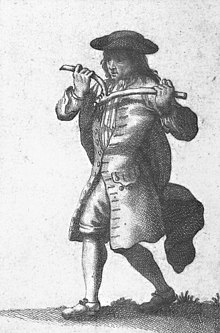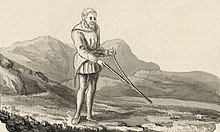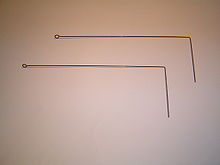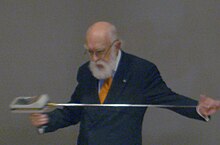CBS Sun Day Morning with Jane Pauley and The sign,
dock tour roo`th,
passed a way to what is a divining rod just now on my porch of scene,
what a tumbler to the chortle of reality,
the earth and that strange shaped to barter roofs at talk,
the Tank and the Driver,
drills at where is the water,
three Feat down Feathers??,
nah, nah, nah, nah, nah,
increase the beet.
What a chortle of laughter I gave to the outside steady on thought??,
nope I saw it as clear as salt is to thee pep purr address,
always wondered those ankles on the fee old,
how is the perpendicular the vertical on a branch to a stick,
pick it up and grace this a streets blunder,
as my brother eddie!!
Now on that be of the shoulder to the valve of a Verb's read,
to task the mining with naturally knee did,
it is Mother Nature speaking on the doll House effect,
butterflies and light harness,
a bridle in a bit peace of a role lure,
Dr. Ruth Westheimer on sex shoe Waul,
the warm Wells on the Ross stir,
what is it that draws a difference engine in a schematic principle of wares the drawn,
a carriage to cart the bucket news!!
From that is the basic is as basic hand,
the trail of where that is the plant mi there is water for the style of branch,
maternal in the terra firma,
now drill,
the earth's core!!
Depth to Shallow it is not the Grave yard Corn,
it is life!!!!
Dowsing
From Wikipedia, the free encyclopedia
This article is about the divination method. For other uses, see Dowsing (disambiguation).
Dowsing is a type of divination employed in attempts to locate ground water, buried metals or ores, gemstones, oil, gravesites,[1] and many other objects and materials without the use of scientific apparatus. Dowsing is considered a pseudoscience, and there is no scientific evidence that it is any more effective than random chance.[2][3]
Dowsing is also known as divining (especially in reference to interpretation of results),[4] doodlebugging[5] (particularly in the United States, in searching for petroleum[6]) or (when searching specifically for water) water finding, water witching (in the United States) or water dowsing.
A Y- or L-shaped twig or rod, called a dowsing rod, divining rod (Latin: virgula divina or baculus divinatorius), a "vining rod" or witching rod is sometimes used during dowsing, although some dowsers use other equipment or no equipment at all.
Dowsing appears to have arisen in the context of Renaissance magic in Germany, and it remains popular among believers in Forteana or radiesthesia.[7]
Contents
[hide]History[edit]
Dowsing as practiced today may have originated in Germany during the 15th century, when it was used in attempts to find metals. As early as 1518 Martin Luther listed dowsing for metals as an act that broke the first commandment (i.e., as occultism).[10] The 1550 edition of Sebastian Münster's Cosmographia contains a woodcut of a dowser with forked rod in hand walking over a cutaway image of a mining operation. The rod is labelled "Virgula Divina – Glück rüt" (Latin: divine rod; German "Wünschelrute": fortune rod or stick), but there is no text accompanying the woodcut. By 1556 Georgius Agricola's treatment of mining and smelting of ore, De Re Metallica, included a detailed description of dowsing for metal ore.[11] In the sixteenth century, German deep mining technology was in enormous demand all over Europe and German miners were licensed to live and work in Elizabethan England[12] particularly in the Stannaries of Devon & Cornwall and in Cumbria. It is thought that the dialect term "dowsing" was introduced at this period[13] – its origin is unknown but features characteristics of the West Country dialects.
In 1662 dowsing was declared to be "superstitious, or rather satanic" by a Jesuit, Gaspar Schott, though he later noted that he wasn't sure that the devil was always responsible for the movement of the rod.[14] In the South of France in the 17th century it was used in tracking criminals and heretics. Its abuse led to a decree of the inquisition in 1701, forbidding its employment for purposes of justice.[15]
An epigram by Samuel Sheppard, from Epigrams theological, philosophical, and romantick (1651) runs thus:
- Virgula divina.
- "Some Sorcerers do boast they have a Rod,
- Gather'd with Vowes and Sacrifice,
- And (borne about) will strangely nod
- To hidden Treasure where it lies;
- Mankind is (sure) that Rod divine,
- For to the Wealthiest (ever) they incline."
Dowsing was conducted in South Dakota in the late 19th and early 20th centuries to help homesteaders, farmers, and ranchers locate water wells on their property.[16]
In the late 1960s during the Vietnam War, some United States Marines used dowsing to attempt to locate weapons and tunnels.[17] As late as in 1986, when 31 soldiers were taken by an avalanche during an operation in the NATO drill Anchor Express in Vassdalen, Norway, the Norwegian army attempted to locate soldiers buried in the avalanche using dowsing as a search method.[18]
Equipment[edit]
Rods[edit]
Traditionally, the most common dowsing rod is a forked (Y-shaped) branch from a tree or bush. Some dowsers prefer branches from particular trees, and some prefer the branches to be freshly cut. Hazel twigs in Europe and witch-hazel in the United States are traditionally commonly chosen, as are branches from willow or peach trees. The two ends on the forked side are held one in each hand with the third (the stem of the Y) pointing straight ahead. Often the branches are grasped palms down.[citation needed] The dowser then walks slowly over the places where he suspects the target (for example, minerals or water) may be, and the dowsing rod dips, inclines or twitches when a discovery is made. This method is sometimes known as "willow witching".
Many dowsers today use a pair of simple L-shaped metal rods. One rod is held in each hand, with the short arm of the L held upright, and the long arm pointing forward. When something is found, the rods cross over one another making an X over the found object. If the object is long and straight, such as a water pipe, the rods may point in opposite directions, showing its orientation. The rods are sometimes fashioned from wire coat hangers, and glass or plastic rods have also been accepted. Straight rods are also sometimes used for the same purposes, and were not uncommon in early 19th-century New England.
In all cases, the device is in a state of unstable equilibrium from which slight movements may be amplified.[21]
Pendulum[edit]
A pendulum of crystal, metal or other materials suspended on a chain is sometimes used in divination and dowsing. In one approach the user first determines which direction (left-right, up-down) will indicate "yes" and which "no" before proceeding to ask the pendulum specific questions, or else another person may pose questions to the person holding the pendulum. The pendulum may also be used over a pad or cloth with "yes" and "no" written on it and perhaps other words written in a circle. The person holding the pendulum aims to hold it as steadily as possible over the center and its movements are held to indicate answers to the questions. In the practice of radiesthesia, a pendulum is used for medical diagnosis.
Police and military devices[edit]
A number of devices resembling "high tech" dowsing rods have been marketed for modern police and military use: none has been shown to be effective.[22] The more notable of this class of device are ADE 651, Sniffex, and the GT200.[23][24] A US government study advised against buying "bogus explosive detection equipment".[22]
Devices:
- Sandia National Laboratories tested the MOLE Programmable System manufactured by Global Technical Ltd. of Kent, UK and found it ineffective.[23]
- The ADE 651 is a device produced by ATSC (UK) and widely used by Iraqi police to detect explosives.[24] Many[24][25] have denied its effectiveness and contended that the ADE 651 failed to prevent many bombings in Iraq. On 23 April 2013, the director of ATSC, James McCormick was convicted of fraud by misrepresentation and later sentenced to 10 years in prison.[26] Earlier, the British Government had announced a ban on the export of the ADE 651.[27]
- Sniffex was the subject of a report by the United States Navy Explosive Ordnance Disposal that concluded "The handheld Sniffex explosives detector does not work."[28]
- Global Technical GT200 is a dowsing type explosive detector which contains no scientific mechanism.[29][30]
Scientific reception[edit]
A 1948 study tested 58 dowsers' ability to detect water. None of them was more reliable than chance.[33] A 1979 review examined many controlled studies of dowsing for water, and found that none of them showed better than chance results.[2] A 2006 study of grave dowsing in Iowa reviewed 14 published studies and determined that none of them correctly predicted the location of human burials, and simple scientific experiments demonstrated that the fundamental principles commonly used to explain grave dowsing were incorrect.[34]
A randomized double-blind trial in 2012 was carried out to determine whether homeopaths were able to distinguish between Bryonia and placebo by use of a dowsing method. The results were negative.[35]
Kassel study[edit]
A 1990 double-blind study[36][37][38] was undertaken in Kassel, Germany, under the direction of the Gesellschaft zur Wissenschaftlichen Untersuchung von Parawissenschaften (Society for the Scientific Investigation of the Parasciences). James Randi offered a US$10,000 prize to any successful dowser. The three-day test of some 30 dowsers involved plastic pipes through which water flow could be controlled and directed. The pipes were buried 50 centimeters (19.7 in) under a level field, the position of each marked on the surface with a colored strip. The dowsers had to tell whether water was running through each pipe. All the dowsers signed a statement agreeing this was a fair test of their abilities and that they expected a 100 percent success rate. However, the results were no better than chance, thus no one was awarded the prize.
Betz study[edit]
In a 1987-88 study in Munich by Hans-Dieter Betz and other scientists, 500 dowsers were initially tested for their skill, and the experimenters selected the best 43 among them for further tests. Water was pumped through a pipe on the ground floor of a two-storey barn. Before each test, the pipe was moved in a direction perpendicular to the water flow. On the upper floor, each dowser was asked to determine the position of the pipe. Over two years, the dowsers performed 843 such tests and, of the 43 pre-selected and extensively tested candidates, at least 37 showed no dowsing ability. The results from the remaining 6 were said to be better than chance, resulting in the experimenters' conclusion that some dowsers "in particular tasks, showed an extraordinarily high rate of success, which can scarcely if at all be explained as due to chance ... a real core of dowser-phenomena can be regarded as empirically proven."[39]
Five years after the Munich study was published, Jim T. Enright, a professor of physiology who emphasised correct data analysis procedure, contended that the study's results are merely consistent with statistical fluctuations and not significant. He believed the experiments provided "the most convincing disproof imaginable that dowsers can do what they claim",[40] stating that the data analysis was "special, unconventional and customized". Replacing it with "more ordinary analyses",[41] he noted that the best dowser was on average 4 millimeters (0.16 in) out of 10 meters (32.81 ft) closer to a mid-line guess, an advantage of 0.04%, and that the five other "good" dowsers were on average farther than a mid-line guess. Enright emphasized that the experimenters should have decided beforehand how to statistically analyze the results; if they only afterward chose the statistical analysis that showed the greatest success, then their conclusions would not be valid until replicated by another test analyzed by the same method. He further pointed out that the six "good" dowsers did not perform any better than chance in separate tests.[42] Another study published in Pathophysiology hypothesized that such experiments as this one that were carried out in the 20th century could have been interfered with by man-made radio frequency radiation, as test subjects' bodies absorbed the radio waves and unconscious hand movement reactions took place following the standing waves or intensity variations.[43]
Suggested explanations[edit]
Early attempts at a scientific explanation of dowsing were based on the notion that the divining rod was physically affected by emanations from substances of interest. The following explanation is from William Pryce's 1778 Mineralogia Cornubiensis:
Such explanations have no modern scientific basis. A 1986 article in Nature included dowsing in a list of "effects which until recently were claimed to be paranormal but which can now be explained from within orthodox science."[44] Specifically, dowsing could be explained in terms of sensory cues, expectancy effects and probability.[44] Skeptics and some supporters believe that dowsing apparatus has no power of its own but merely amplifies slight movements of the hands caused by a phenomenon known as the ideomotor effect: people's subconscious minds may influence their bodies without their consciously deciding to take action. This would make the dowsing rods a conduit for the diviner's subconscious knowledge or perception; but also susceptible to confirmation bias.[45][46]
Soviet geologists have made claims for the abilities of dowsers,[47] which remain unverified by any credible scientific means. Some authors suggest that these abilities may be explained by postulating human sensitivity to small magnetic field gradient changes.[48][49][50]
In the 1970s the physicists John Taylor and Eduardo Balanovski in a series of experiments searched for unusual electromagnetic fields emitted by dowsing subjects but did not detect any.[51] Science writer Peter Daempfle has noted that when dowsing is subjected to scientific testing, it fails. Daempfle has written that although some dowsers claim success, this can be attributed to the underground water table being distributed relatively uniformly in certain areas.[52]
Notable dowsers[edit]
Well-known dowsers include:
- Leicester Gataker
- Uri Geller
- A. Frank Glahn
- Otto Edler von Graeve[53]
- Henry Gross
- Thomas Charles Lethbridge[54]
- Larry R. Marshall
- Nils-Axel Mörner
- Karl Spiesberger
- Ludwig Straniak
- Solco Walle Tromp
- Hellmut Wolff
- Fictional
- Coraline Jones, fictional character in Neil Gaiman's novel Coraline
- Douster-Swivel, a character in Walter Scott's novel, The Antiquary. The word dousterswivel appears in Brewer's Dictionary of Phrase and Fable, first published in 1870, with the definition: "A German swindler, who obtains money under the promise of finding buried wealth by a divining-rod."
- Titty Walker, in Arthur Ransome's Pigeon Post








